Wing infantry armor (part 3)
In the second half of the 70s, it was possible to accumulate some experience in operating combat assault vehicles. Strengths of the landing "aluminum" tanks”Were considered: relatively light weight, which made it possible to use landing platforms and dome systems with a carrying capacity of up to 9500 kg for parachuting, good mobility and cross-country ability on soft soils. At the same time, it was quite obvious that the security and armament of the BMD-1 was very far from ideal. This was especially pronounced after the introduction of the "limited contingent" in Afghanistan.
At the beginning of the 80-x in the Volgograd Tractor Plant design bureau began the design of an airborne assault vehicle, with the 30-mm automatic cannon and launcher of the Fagot and Konkurs ATGMs. At the same time, in order to save time and financial resources that were required for launching a new car into the series, which received the designation BMD-2 after being put into service, it was decided to use the body and aggregates of the existing BMD-1. The first vehicles arrived for military tests in the 1984 year, and a year later the BMD-2 was put into service.
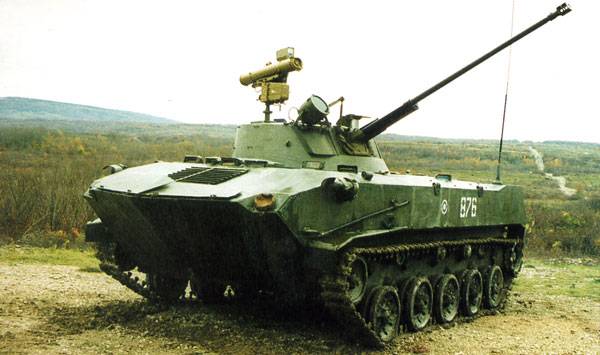
The main innovation was the single-seat turret with an 30-mm automatic cannon and an 7,62-mm PKT machine gun paired with it. The 2А42 cannon and the 2E36 armament stabilizer were originally developed for the army BMP-2 and were subsequently adapted for use on the new assault landing vehicle. The two-plane stabilizer gives the chance of conducting aim shooting during the movement of the car. Compared with the 73-mm smooth-bore gun mounted on the BMD-1, the effectiveness of the BMD-2 weapons has increased significantly. Another difference between the serial BMD-2 and BMD-1 was the refusal of the left machine gun course.
The automatic 30-mm gun with a variable rate of fire (200-300 rds / min or 550 rds / min) could be successfully used not only to combat tank-dangerous manpower and to defeat lightly armored vehicles at a distance of 4000 m, but also to fire low-altitude subsonic air targets flying at heights up to 2000 m and slant range to 2500 m. The cannon’s ammunition (300 shells) includes armor-piercing tracer (BT), fragmentation tracer (OT) and fragmentation-incendiary (OZ) projectiles. To feed the gun, two separate ribbons are used, consisting of several separate links. The capacity of the tape with BT shells - 100 shots, with OT and OZ - 200 shots. The gun has a mechanism that allows you to move from one type of ammunition to another. Reloading the gun is possible manually or using a pyrotechnic device. Vertical guidance angles: −6 ... + 60, which allows not only to fire at air targets, but also to fire on the upper floors of buildings and mountain slopes.
The 30 armor-piercing tracer 3UBR6 400 g projectile has an initial speed of 970 m / s, and at a distance of 200 m normal can penetrate 35 mm armor, at a distance of 1000 m armor penetration - 18 mm. The 3UOF8 389 g missile projectile contains 49 g of explosive and has a continuous area of damage with a radius of 2 m.
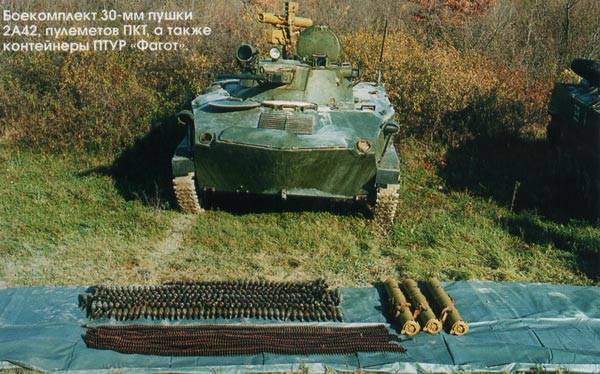
Just like the BMD-1, the new BMD-2 received a complex of anti-tank weapons 9K111, which is designed to hit armored vehicles moving at speeds up to 60 km / h, fixed firing points, as well as frozen or slow-flying helicopters at distances up to 4000 The BMD-2 has two 9М111-2 missiles and one 9М113 rocket. In the combat position, the launcher with the hardware unit is mounted on the bracket to the right of the hatch of the gunner operator. For firing from weaponsinstalled in the tower BMD-2, uses a combined sight with day and night channels BOD-1-42 (with 1986, BOD-2-42) and a day-anti-aircraft sight ROM-8. Also inside the vehicle can be transported MANPADS "Strela-3" or "Needle-1".
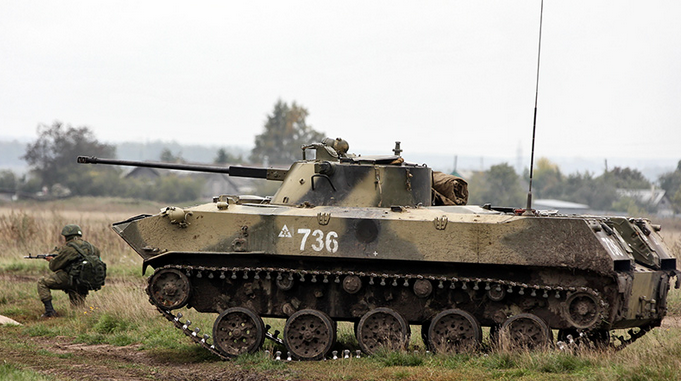
Compared to the BMD-1, the machine armed with the 30-mm gun became heavier by about 1 tons, which, however, did not affect the level of mobility. Security and mobility remained the same as on the BMD-1 of the last serial modification. Due to the redistribution of duties and changes in the internal layout, the crew size was reduced to two people, and the number of paratroopers transported inside the corps is 5 people. The P-123M tube radio was replaced with a P-173 semiconductor. By analogy with the BMD-1K, a BMD-2K commander machine was created, equipped with radio stations P-173, a gas-powered unit AB-0,5-3-П / 30, and a gyropump of the GPK-59. To expand the free space inside the car, the transportation of ATGN in the BMD-2K is not provided.
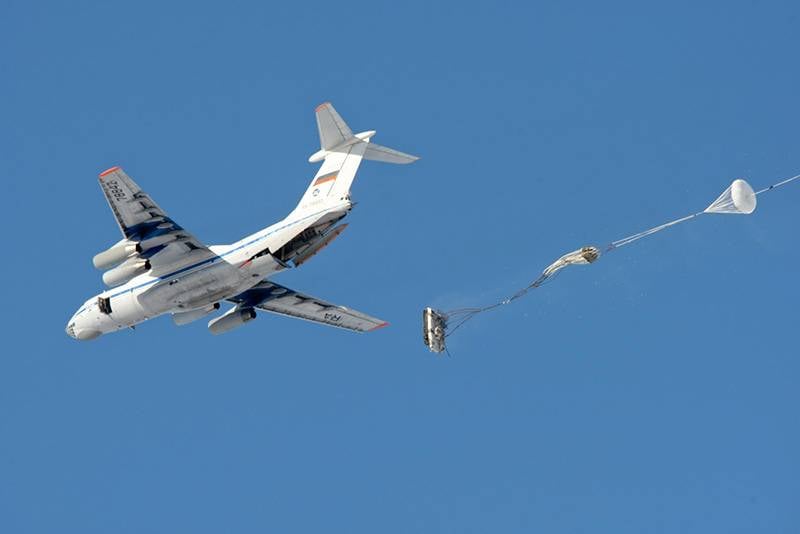
For the release of BMD-2, regular airborne means are used, which were previously tested on BMD-1. Although the armor of the car did not become thicker and, just like on the BMD-1, it provided protection against bullets of a large-caliber machine gun in a frontal projection, and the board held bullets of rifle caliber, the combat effectiveness of the BMD-2 increased 1,5-1,8 times. The probability of destruction of typical tank-dangerous targets, such as: a grenade launcher in a trench or the calculation of anti-tank systems, has more than doubled. The vulnerability of the machine decreased due to the fact that 30-mm projectiles with combat damage, as a rule, did not detonate, even if the cumulative jet hit the combat pack. In this case, small-caliber shells are safe enough and in most cases do not transmit detonation from one to another. On the contrary, the explosion of one 73-mm projectile on the BMD-1 led to the detonation of the entire ammunition with 100% probability of death of the vehicle and crew. Also due to the transition to resistant to powerful shaking 30-mm ammunition, losses were reduced during explosions on mines. A small amount of BMD-2 was sent to Afghanistan for combat testing. The aluminum “landing tanks” took an active part in two Chechen campaigns, were involved in a number of peacekeeping operations in the conflict with Georgia in 2008. In eastern Ukraine, BMD-2 was used by the opposing sides.
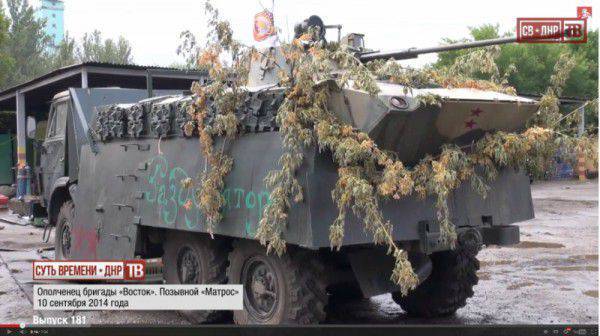
Machines devoid of stroke as a result of breakdowns or combat damage were often buried in the ground along the turret and used as fixed fire points on the opposition line. In the armed forces of the DPR there was at least one “gantrak”, created by installing BMD-2 with a faulty engine in the body of an armored KamAZ.
In the course of military operations in the post-Soviet space, BMD-2, with proper use, proved to be positive. Often, thanks to the high mobility and skill of the driver, it was possible to avoid defeating an RPG and even an ATGM. Reliability and maintainability of the machine were at a fairly high level, but during long-term operation in the area of the “counter-terrorist operation” it turned out that the resource of some extremely lightweight components and assemblies is less than that of the army BMP-2.
Production of BMD-2 was carried out in Volgograd until the collapse of the USSR. According to The Military Balance 2016, there were about 2016 BMD-1000 in the RF Armed Forces as of 2 year. However, the number of serviceable, combat-ready machines may be less in 2-2,5.
In 2012, the decision to upgrade the 200 BMD-2 to the BMD-2M level was announced. On the upgraded machines, an advanced weapon stabilizer 2E36-6 and an all-day fire control system with automatic target tracking are installed. The armament introduced the anti-tank complex "Kornet", which allows firing at tanks and low-altitude air targets at a distance of 6 km. In the modernized car, the modern radio station P-168-25-2 appeared. As of 2016 year, about 50 overhauled and upgraded BMD-2М were delivered to the troops.
Almost simultaneously with the start of work on the BMD-2, the design of the next-generation airborne combat vehicle started. When creating the BMD-3, the experience of combat use and operation of existing airborne assault vehicles in the troops, trends in the development of light armored vehicles and weapon upgrades were taken into account. First of all, the task was to increase the security of the crew and the landing force, while maintaining mobility and maneuverability at the BMD-1 level. In addition, the BMD-1 and the BMD-2 created on its base were rightly criticized for the small number of paratroopers transported inside the vehicle and the extreme constraint of their deployment. The experience of using BMD-2 in combat operations in Afghanistan has shown that for more effective use of weapons on an airborne combat vehicle, it is advisable to have a double turret in which not only the gunner-operator, but also the commander of the vehicle should be placed. Since in 80, the main military transport aircraft was Il-76, surpassing the An-12 carrying capacity, and the heavy An-124 was also mass-produced, an increase in the mass of the promising airborne assault vehicle to 15 tons was considered acceptable. As it was impossible to realize all this, modernizing the BMD-2 further, it was impossible in the middle of the 80s in the design bureau of the Volgograd Tractor Plant under the direction of the chief designer A.V. Shabalina created a new airborne combat vehicle, which, after testing and refinement, was put into service in the 1990 year.
Increasing the size of the hull allowed to place a double turret with a 30-mm 2-42 gun on the car. The ammunition of the gun consists of 500 shells, equipped with combat-ready ribbons and another 360 shots are placed inside the machine. 7,62-mm PKT machine gun is paired with a gun. Compared to the BMD-2, the body of the new machine has become longer on the 600 mm and wider on the 584 mm. In addition to increasing the internal volume, the machine increased stability when firing from a cannon, which had a positive effect on the accuracy of firing. The gun is stabilized in two planes and can conduct aimed shooting on the go. The gunner-operator has three prism surveillance devices TNPO-170А. The TNPT-1 device is intended for searching the target and viewing with large angles in the vertical and horizontal planes. When firing, the gunner uses a Binocular periscopic combined sight BPK-2-42. The day branch of this device has a field of view 10 ° with a magnification of x6, at the night branch these figures are 6,6 ° and x5,5. Commander of the machine for battlefield surveillance and target search uses the combined device TKN-3MB two prism unit TNPO-170A, periscope TNPT-1 and monocular periscope day sight 1PZ-3 with increases 1,2-4 times range and field of view, 49-14 ° . To combat tanks, the BMD-3 is equipped with the 9P135M ATGM and four “Competition” ATGM. In the back of the tower installed mortars system of setting the smoke screen 902В "Cloud".
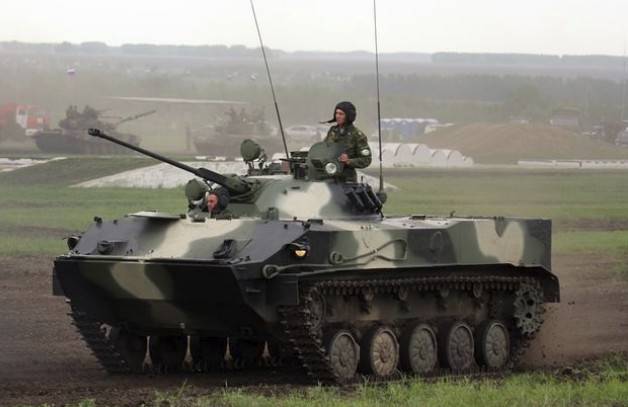
The mass of the machine in a combat position reaches 13,2 tons. Like on airborne machines of the previous generation, the BMD-3 hull is made of light alloys, and the tower is borrowed from the BMP-2. The security of the machine has increased slightly, the front armor of the BMD-3 is capable of holding 14,5-mm KPVT machine gun bullets. The body of the machine is sealed, thereby providing protection against weapons of mass destruction. Creating an overpressure and cleaning the air inside the machine takes place using a filtering unit.
The 5,45-mm RPX-74 machine gun is placed in the frontal section to the right of the driver's seat in the ball mount, and the left-hand 30-mm AGS-17 grenade launcher. Thanks to the mounted flight trajectory of 30-mm fragmentation grenades, automatic fire from AGS-17 can hit targets behind cover that are inaccessible to other weapons mounted on the BMP-3. Shooting from the course machine gun and grenade launcher in the direction of movement are paratroopers. If necessary, the RPKS-74 light machine gun can be dismantled from the ball mount and used individually. In the sides of the car there are two embrasures, covered with armored gates, intended for firing from personal assault weapons. The BMD-3 crew consists of three people, inside the car there are places for five paratroopers. Chairs of crew members and troops to reduce the effects of explosions on mines are provided with shock absorption and are attached not to the floor, but to the roof of the hull.
Despite the increased mass, the BMD-3 mobility is even higher than that of the BMD-2. 2B-06-2 diesel engine with 450 horsepower accelerates the car on the highway to 70 km / h. Speed afloat - 10 km / h. The machine overcomes the rise of the slope to 35 °, a vertical wall up to 0,8 m, a moat width up to 2 m.
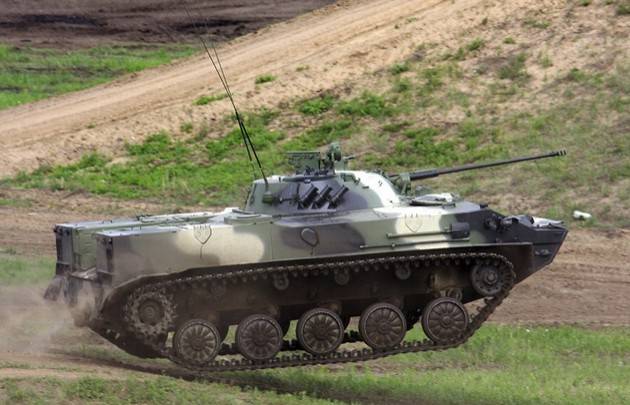
Due to the ability to float on the sea when the waves are up to 3, the BMD-3 points can be landed from the landing craft into the water and in the same way be loaded back onto the ships. Especially for BMD-3, a new strap-up parachute landing system PBS-950 has been created. It has a small mass (about 1500 kg), high reliability, easy to operate and allows you to parachute personnel in combat vehicles.
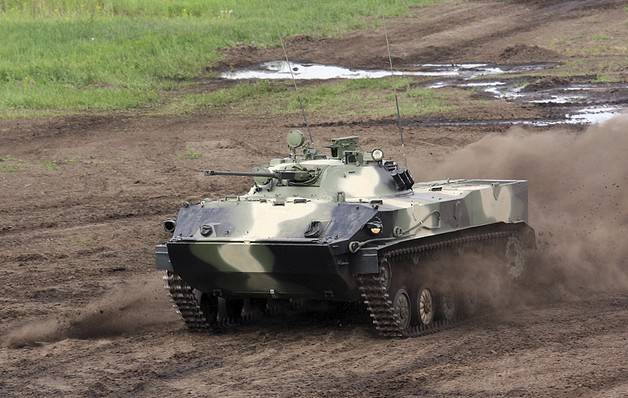
Serial production of BMD-3 began at the Volgograd Tractor Plant (VgTZ) at the beginning of 1990. In total, taking into account the experimental and pre-production copies intended for military trials, 1997 machines were built before 143. The termination of the release of BMD-3 was due to the insolvency of the customer. Although the specialists of the plant design bureau, in cooperation with allied specialists and with the participation of the relevant institute of the Ministry of Defense, worked to create an improved version of the BMD-3М and a number of special-purpose machines, it was not possible to complete the process in full. In December 2002, the Volgograd Tractor Plant was split into separate companies at 4. In 2005, the Volgograd Tractor Works was declared bankrupt by the decision of the Arbitration Court of the Volgograd Region. According to the information provided in the The Military Balance 2016 directory, two years ago, the Russian armed forces had 10 BMD-3. According to the same source, a certain amount of BMD-3 is in service in Angola.
On the basis of BMD-3 created a number of special purpose machines. Perhaps the most famous and interesting was the self-propelled 125-mm anti-tank gun 2C25 "Sprut-SD". The appearance of this self-propelled gun is associated with the increased security of the frontal projection of the tanks of the potential enemy and their equipment with dynamic protection. Experts predicted that the effectiveness of guided anti-tank missiles in the event of a massive introduction of optical-electronic countermeasures and complexes of active protection of tanks may sharply decrease. In addition, the cost of each new generation of ATGM increased 5-8 times. Amphibious units operating in isolation from the main forces required a highly mobile armored artillery, capable of fighting modern tanks at all combat distances and destroying enemy field fortifications.
The creation of the new installation began in the 1985 year, using the results obtained in the design of pilot light tanks armed with 100-125-mm caliber guns. The chassis is the BMD-3 base, elongated by two rollers, with a hydropneumatic chassis of a new design that can change the ground clearance of the Sprut within a few seconds, and the suspension design gives the gun a high smoothness and throughput.
Landing self-propelled gun has a classic tank layout. In front of the vehicle there is a control compartment with a driver’s workplace, followed by a fighting compartment with a gun turret, in which the commander and gunner are located, the engine compartment in the rear part. When making a march, the gunner is to the left of the driver, and the commander is to the right.
Each crew member has individual surveillance devices that operate in the "day-night" mode. A new fire control system is installed on the machine, which includes the gunner’s sighting system, a commander’s combined sight combined with a laser rangefinder, and a two-line stabilized kit for targeting anti-tank guided missiles. The fire control system of the gun commander provides all-round observation of the terrain, search for targets and issuing target designation to the gunner. Sensors are mounted on the outer side of the tower, providing automatic input of corrections to the ballistic computer when firing.
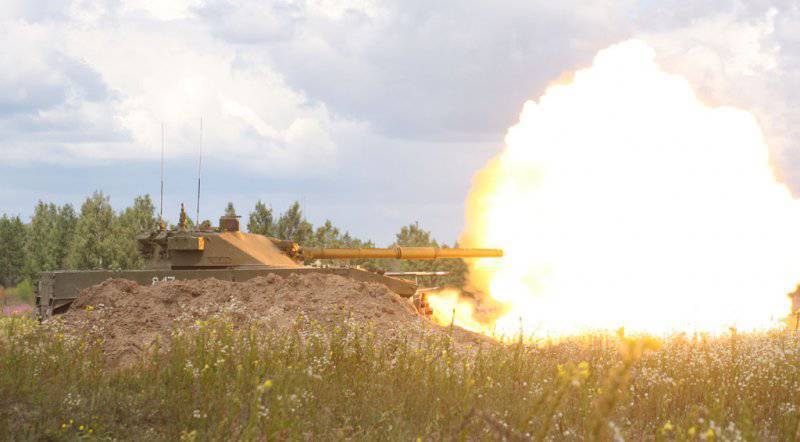
The 125-mm 2-75 smooth-bore gun mounted on the Sprut-SD was based on the 2-46 tank gun used to arm the main battle tanks: the T-72, T-80 and T-90. The gun is stabilized in two planes and capable of firing any type of tank ammunition caliber 125 mm, with separate-sleeve loading. Since the self-propelled chassis is much lighter than the tank, a new recoil device was installed to compensate for recoil when fired. This made it possible to abandon the use of muzzle brakes. A new ejector and a thermo-insulating jacket are installed on the gun. The use of a conveyor-type automatic loader located behind the tower made it possible to abandon the loader and increased the rate of fire of the gun to 7 rds / min. The 22 shot, fully ready for use, is placed in the machine’s combat pack. In addition to the armor-piercing and high-explosive fragmentation shells, the ammunition includes anti-tank missiles 9М119М Invar-M, launched through the barrel. Laser-guided anti-tank guided missiles are capable of striking enemy tanks at a distance of up to 5000 meters. Invar-M anti-tank penetration systems - 800 mm of homogeneous armor after overcoming dynamic protection. The characteristics of anti-tank systems with an average flight speed of a laser-controlled rocket — more than 280 m / s — allow it to be used to combat airborne targets. Vertical gun pointing angles: from -5 to + 15 °. 7,62-mm PKT machine gun - 2000 ammunition ammunition is paired with a gun. At the rear of the tower, 8 mortars of the 902 B “Smoke” smoke screen installation system are installed.
The body and turret of an artillery installation are made of aluminum armor alloy. It is possible to enhance the protection of the frontal part of the steel plates. After that, the armor is capable of holding 14,5-mm armor-piercing bullets. The side armor protects against rifle bullets and light splinters.
High specific power of the engine in combination with a hydropneumatic suspension and low specific pressure on the ground provide the CAO good mobility. The 18 t weighing machine, equipped with an 2В-06-2С engine with 510 hp power, accelerates on the highway to 70 km / h. The machine is able to move along the country road at speeds up to 45 km / h, afloat speed 9 km / h. Cruising on the highway to 500 km, on the country road - 350 km. Self-propelled gun capable of lifting in 35 °, wall height 0,8 m and moat width 2,5 m.
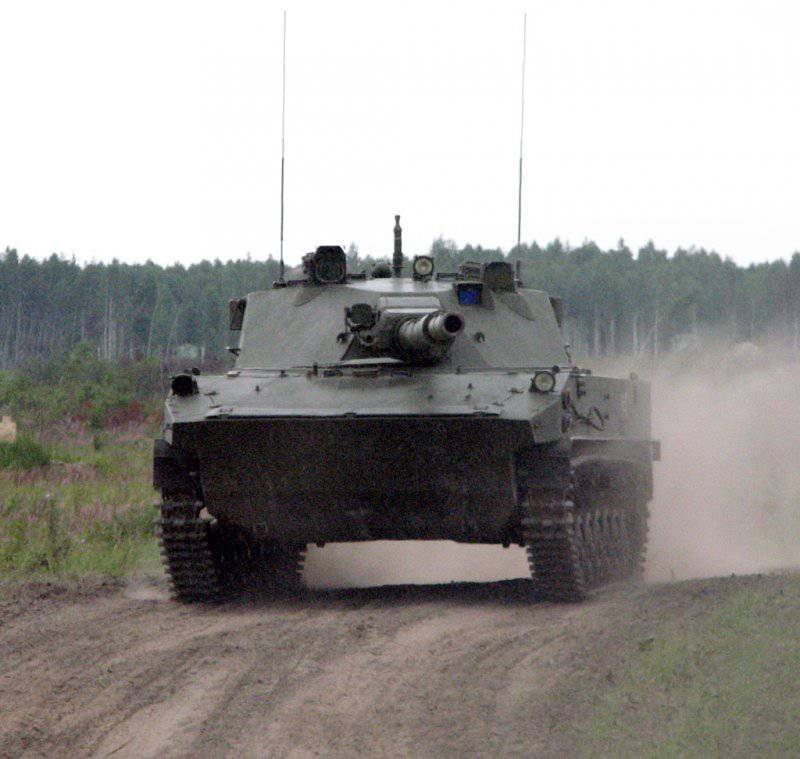
Since the Octopus turned out to be heavier than the BMD-3, they developed a new landing system for self-propelled guns. Initially it was planned to use the PNNUMX parachute jet, created using elements of the soft landing system of the Soyuz-type descent capsule. However, the creation of this system coincided with the collapse of the USSR and the cessation of funding. In 260, as an alternative, they approved the development of a multi-domed parachute system with air depreciation, maximally unified in terms of operating principles, components and components with PBS-1994 BMD-950 serial landing equipment. The parachute variant of the landing facilities of the Sprout-SD CAO was designated P3M. The military transport aircraft Il-260 of early release is capable of taking one machine for landing, and the modernized IL-76MD - two. The 76C2 ACS can also be transported on the external suspension of the Mi-25 helicopter.
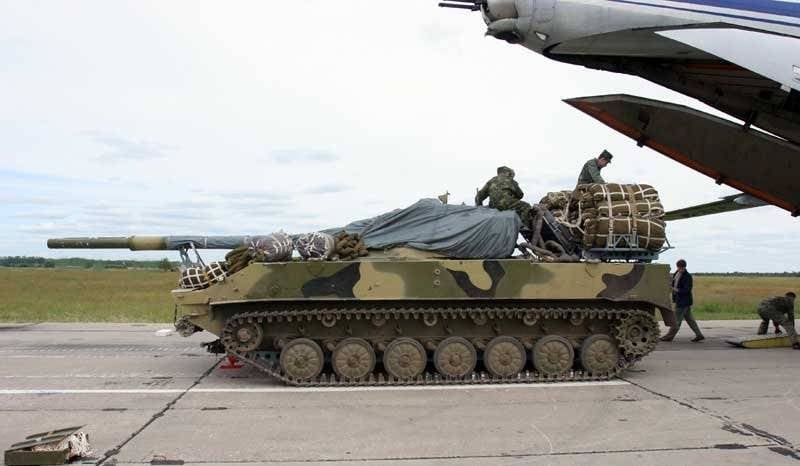
In fact, the 2-XNNXX Sprut-SD antitank self-propelled artillery mount was ready for use in the middle of the 25-x. This was hampered by the unwillingness of the parachute landing system, which in turn could not be brought to mind due to the banal lack of funding. It took about 90 more years to get the customer to decide whether he needed a light anti-tank self-propelled gun, capable of effectively counteracting the main battle tanks.
The official order of the Minister of Defense on the adoption of the 2C25 self-propelled anti-tank gun on 9 January 2006. But on this misadventure machine is not over. During the “Serdyukovschiny” serial production of the CAO was discontinued. According to the Deputy Minister of Defense, Chief of Armament of the Armed Forces of the Russian Federation, V.A. Popovkin, this decision was due to the fact that the airborne artillery installation of the Russian army is not needed because of the complexity of the development of military service, low security and high cost. At the same time, it was proposed to purchase abroad or establish licensed production of the Italian wheeled tank destroyer B1 Centauro. In 2012-2014, two cars with 105-mm and 120-mm guns were tested in Russia. In the course of the tests, it turned out that with the 24 t mass in terms of security in a frontal projection, the Italian armored car does not exceed the Sprut-SD. There is also no advantage in firepower, and in terms of maneuverability on weak soils, the “Centaur” is seriously inferior to the Russian caterpillar CAO. The production of B1 Centauro was completed in 2006 year, at the time of the termination of serial construction the cost of one machine was € 1,6 million.
It is clear that the machine type 2C25 "Sprut-SD" can not replace the main battle tanks. However, airmobile floating self-propelled installations of light weight category, similar to tanks in terms of firepower, are necessary in modern conflicts for the rapid reaction forces. Their presence in the combat formations of paratroopers and marines increases the strike potential in the offensive and resistance in the defense. According to The Military Balance 2016, in the Russian army as of January 2016, there were at least 36 anti-tank self-propelled 2 – XNNXX “Sprut-SD” anti-tank guns, which is much less than the required Airborne Forces and Marines.
In 2015, there was information about creating a new version of the CAO 2C25М Sprut-SDM1. According to the information voiced by the representative of the Volgograd Machine-Building Company, as part of the modernization of the machine, its firepower is enhanced by installing a modern digital fire control system and putting new, more effective ammunition into ammunition. The OMS included: a commander’s panoramic sight with optical, thermal imaging and distance measuring channels, a combined gunner’s sight with optical, thermal imaging, distance measuring channels and a laser missile control channel, as well as automatic target tracking. ” The upgraded version received the equipment for controlling the remote detonation of shells on the trajectory, a ballistic computer, as well as automated workstations for the commander and the gunner-operator. The self-propelled weapon includes a remote-controlled module with a 7,62-mm machine gun, similar to that used on the T-90M tank.
Thanks to the introduction of the software and hardware complex and the integration of the machine into the automated tactical level control system, command control in combat has been enhanced. The mobility of the machine has increased due to borrowing from the BMD-4M engine, transmission, chassis components, as well as the information and control chassis system. According to the information sounded at the Army-2016 International Military-Technical Forum in Kubinka, the delivery of the serial IJSC Sprut-SDM1 to the RF Armed Forces should begin in the 2018 year.
To be continued ...
Based on:
https://tvzvezda.ru/news/forces/content/201602101343-42cl.htm
https://vpk-news.ru/news/25603
The Military Balance 2016
http://www.zavdv.ru/bmd3/index.htm#photo_14
https://modernweapon.ru/artilleriya/sau/290-2s25-sprut-sd-samokhodnaya-protivotankovaya-pushka-rossiya.html
http://politrussia.com/vooruzhennye-sily/noveyshaya-bronya-desanta-908/
Articles from this series:
Wing infantry armor (part 1)
Wing infantry armor (part 2)
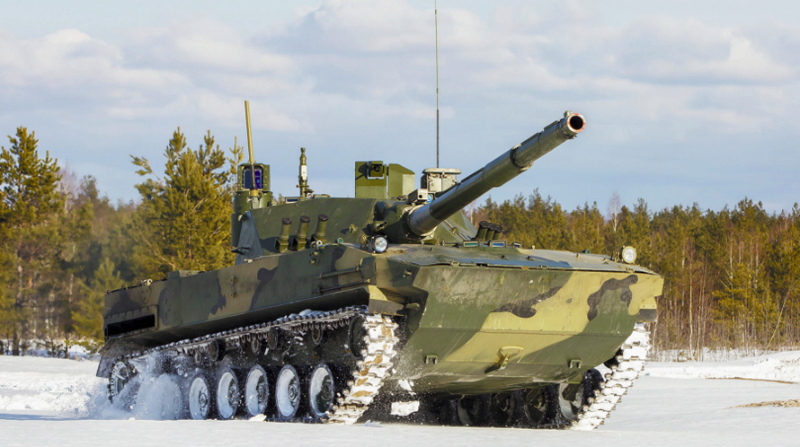
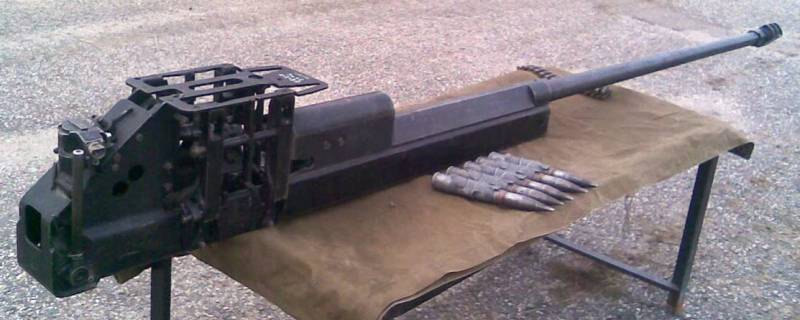
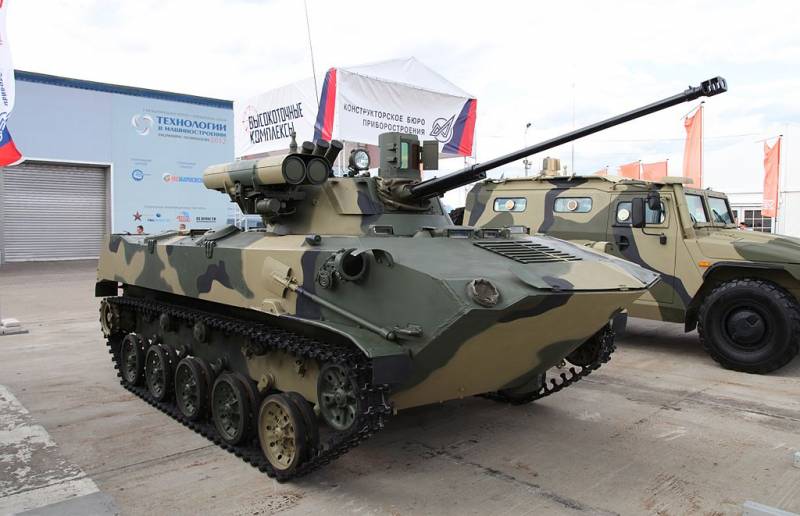
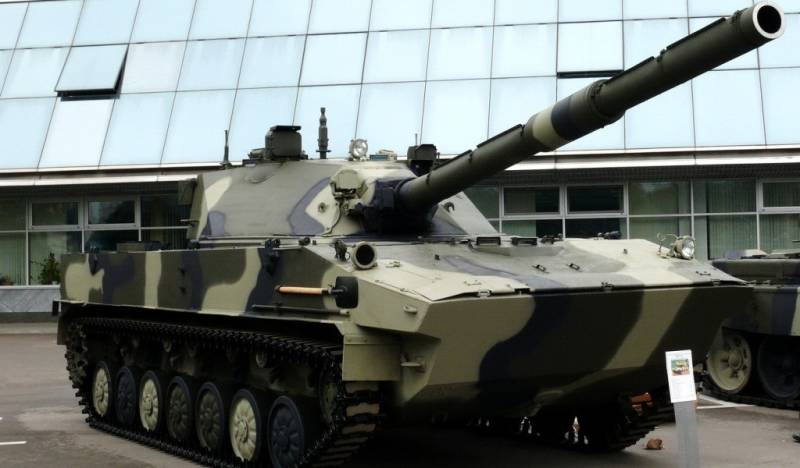
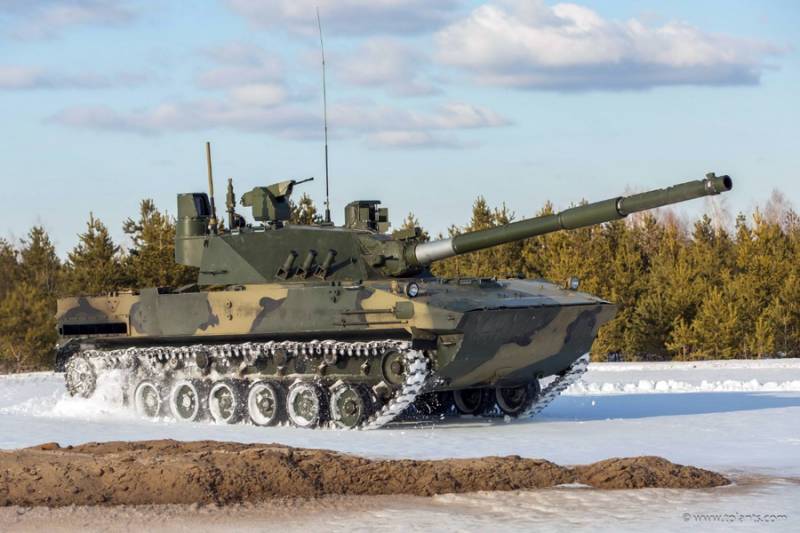
Information